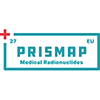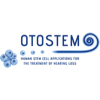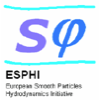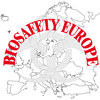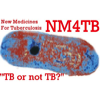Projects
SCIPROM has been involved in European projects since the advent of FP6. Below is a compilation of our completed and our ongoing projects.
Ongoing projects
MEFISTO
A great many patients who had partial resection of the meniscus suffer from early degenerative changes in the knee. The EU project MEFISTO is taking on the challenge of developing innovative ways using bioactive functionalised materials to prevent the onset of osteoarthritis following meniscus loss.
MEFISTO will profile and identify the population of patients who, after meniscal resection, are at higher risk of early compartment degeneration and will provide evidence in vitro and in animal models towards a personalised approach for the patient in the future. Younger patients with early osteoarthritic changes will be addressed by treatment in the form of a controlled vascularised bioactive biodegradable meniscal scaffold, which will regenerate the native meniscus. A bioactive non-biodegradable meniscal prosthesis, acting as a mechanical unloading device and a drug delivery system, with the capacity to modulate the inflammatory environment will be targeted at patients with advanced osteoarthritis. A socio-economic analysis of the efficacy of existing meniscal substitutes will complete the project.
MEFISTO receives funding from the European Union's Horizon 2020 research and innovation programme under grant agreement No 814444 (MEFISTO).
ULISSES
Air sensors for everyone, everywhere! Air quality is invisible and strongly affects our health and performance. Also, air quality in cities changes dramatically from one hour to the next and from one block to another. A dense mesh of mobile miniaturized sensors reporting air quality, in real time, will help us to make informed decisions and in the long run to improve air quality. The vision of ULISSES is that everyone should always be aware of the air quality we breath!ZeroAMP
ZeroAMP develops nanoelectromechanical (NEM) relay-based field-programmable gate arrays (FPGA) with integrated non-volatile memory (NVM) that can work at temperatures up to 300 °C, with zero current leakage and standby power. The technology solution will incorporate novel materials, switch designs and circuit techniques along with advanced 3D stacking for large-scale integration of the NEM switching elements.
The ZeroAMP project is a joint effort of 7 partners from industry, research institute and academia from four different European countries. ZeroAMP receives funding from the European Union's Horizon 2020 research and innovation programme. The project started on 1 January 2020 and will run until 31 December 2023.
This project has received funding from the European Union's Horizon 2020 research and innovation programme under grant agreement No 871740 (ZeroAMP).
TiGRE
The demands of citizens and public authorities for data and privacy protection, financial stability, product safety and traceability are constantly increasing. In such a context, all actors need to trust governance and regulatory regimes that their interests are safeguarded. However, recent scandals, such as major data leakages and privacy-threatening behaviour by Facebook, Google or Zoom for instance, have created threats for citizens' trust in regulatory regimes.
In TiGRE, we believe that an optimal level of trust is a precondition and a consequence of well-functioning of regulatory regimes, which operate across different levels of governance for carrying out regulatory policies. In this context, we will investigate under which conditions regulatory regimes are trusted by analysing the interactions between the involved actors. We aim to draw a more encompassing picture of trust dynamics and understand their drivers as well as their political and socio-economic effects.
TiGRE is a multidisciplinary research project which benefits from the expertise of nine top-level universities and research centres and one SME, from nine different countries, bringing together a broad range of theoretical and methodological skills. TiGRE receives funding from the European Union's Horizon 2020 research and innovation programme. The project started on 1 January 2020 and will run until 30 June 2023.
DIGIPREDICT
DIGIPREDICT proposes the first of its kind digital twin to predict the progression of disease and the need for early intervention in infectious and cardiovascular diseases.
The DIGIPREDICT consortium is composed of seven top-level universities, research centres, hospitals and three SMEs bringing together a range of excellent international scientists with complementary and interdisciplinary skills. Together, they combine cross-cutting lines of research in all aspects of intelligent systems with latest advances in biomedical research.
This project has received funding from the European Union's Horizon 2020 research and innovation programme under grant agreement No 101017915 (DIGIPREDICT). The project started on 1 January 2021 and will run until December 2024.
GreEnergy
Most energy sources we use have low efficiency and rely on non-renewable resources. GreEnergy envisions more efficient use of the cleanest, most powerful and nearly unlimited energy source available: the Sun. Current solar photovoltaics (PV) produce roughly 4% of the world’s electricity, due to low efficiency and relatively high cost. The GreEnergy challenge is to develop an integrated optical antennas array, which can harness energy from the light spectrum with very high efficiency (20-40%), at an estimated system cost below €100 per 1m2. This also results in more power per specific area.
To do so, GreEnergy devices will integrate nano-optical antennas with nano-rectifiers (rectennas) and a micro-energy storage component, on a single microchip.
Our technology has the potential for revolutionary development of IoT devices which will not need to be charged from an external power supply. Examples of applications which would benefit from our progress are autonomous micro-drones for real-time environmental monitoring, wearable outdoor devices and outdoor sensors for structural monitoring.
This project has received funding from the European Union's Horizon 2020 research and innovation programme under grant agreement No 101006963 (GreEnergy).
PRISMAP
Nuclear therapy and molecular imaging are widely used at hospitals for new promising medical procedures. They can drastically improve the outcome for many medical conditions, and enables treating disseminated cancer in particular. However, its effective development has long been limited by the difficult access to radionuclides not yet commercially available. With PRISMAP – The European medical radionuclides programme, this is about to change.
The main goal of PRISMAP is to provide a sustainable source of high purity grade new radionuclides for medicine, involving from the onset upcoming major European infrastructures, to provide a single-entry point for all researchers active in this field including SMEs, global pharma, nuclear centres, hospitals and universities, using standardised access procedures.
The PRISMAP Consortium comprises 23 partners including 9 major EU, national or regional infrastructures, 4 emerging infrastructures, as well as top-level research centres, hospitals, the European Joint Research Centre and one SME. The PRISMAP partners come from 13 different countries, namely Austria, Belgium, Denmark, France, Germany, Italy, Latvia, Norway, Portugal, Poland, Sweden, Switzerland and UK, under the coordination of CERN, the European Laboratory for Nuclear Research.
This project has received funding from the European Union's Horizon 2020 research and innovation programme under grant agreement No 101008571 (PRISMAP).
i-EDGE
In the i-EDGE project a research team consisting of Microchip Technology Inc. (UK and France), a leading provider of smart, connected and secure embedded control solutions, the University of Bristol (UK), KTH Royal Institute of Technology (KTH, Sweden), Technical University of Vienna (TUWIEN, Austria), Gesellschaft für Angewandte Mikro und Optoelektronik mbH (AMO, Germany), the Swiss Centre for Electronics and Microtechnology SA (CSEM, Switzerland) and SCIPROM Sàrl (SCIPROM, Switzerland) will build processors from tiny mechanical relays with moving parts to withstand these harsh environmental conditions. Because these switches operate fundamentally differently from transistors, they can withstand much higher temperatures and radiation levels without failing, while an open air gap in the off state means no standby power is consumed.
'This project has received funding from the European Union, the Swiss State Secretariat for Education, Research and Innovation (SERI) and UK Research and Innovation (UKRI) under the UK government's Horizon Europe funding guarantee (grant numbers 10061130 and 10063023).
Better-B
The overall aim of this 4-year Better-B project is to improve the resilience of beekeeping to abiotic stresses such as climate change, habitat loss and hazardous chemicals. Honey bee colonies are often poorly adapted to cope with these stresses, in no small part due to modern beekeeping practices. The key to resilient beekeeping is to harness the power of nature to restore harmony and balance inside the honey bee colony and between the colony and the environment, both of which have been disturbed by human activities. We believe that the path to harmony and balance is shown by Darwinian colonies: abandoned colonies and feral colonies that have survived in the wild. However, such colonies usually lack many favorable characteristics that are important in modern beekeeping. The solution here is to understand the processes and mechanisms that apply in nature and to adapt modern beekeeping practices and decision making accordingly, and when appropriate using the benefits of advanced technologies. This is what Better-B stands for. The implementation of this new approach in apicultural management will be done in close collaboration with the actors involved. The restoration of harmony and balance must take place on three levels: the environment, the honey bee and beekeeping practices.
'This project has received funding from the European Union, the Swiss State Secretariat for Education, Research and Innovation (SERI) and UK Research and Innovation (UKRI) under the UK government's Horizon Europe funding guarantee.
Completed projects
IMPRiND
Alzheimer’s and Parkinson’s diseases are age-related neuro- degenerative disorders without cure. They are characterised by the progressive loss of brain cells often along interconnected networks. Recent evidence suggests that this progressive march of pathological lesions may be due to the release and uptake of specific aggregated proteins which act as templates for further aggregation once inside cells. However, a complete understanding of such events and the underpinning cellular mechanisms is still lacking. IMPRiND aims to ll this knowledge gap and develop tools and assays for targeting these pathways to pave the way for novel therapeutics that could delay the progression of Alzheimer’s and Parkinson’s disease.
The project has a total budget of 11.4 million Euros. It is supported by the IMI with 4.7 million Euros, by industrial partners with 6.4 million Euros and 0.3 million Euros from the Swiss Federation. The project started on 1 March 2017 and is expected to run for 48 months, with a possible prolongation of 3 years depending on progress.
Rhapsody
The stated goal of Rhapsody is to define a molecular taxonomy of type 2 diabetes mellitus (T2D) that will support patient segmentation, inform clinical trial design, and the establishment of regulatory paths for the adoption of novel strategies for diabetes prevention and treatment.
Rhapsody's plans are built upon:
- access to large European cohorts with comprehensive genetic analyses and rich longitudinal clinical and biochemical data and samples
- detailed multi-omic maps of key T2D-relevant tissues and organs
- large expertise in the development and use of novel genetic, epigenetic, biochemical and physiological experimental approaches
- the ability to combine existing and novel data sets through effective data federation and use of these datasets in systems biology approaches towards precision medicine; and expertise in regulatory approval, health economics and patient engagement.
These activities will lead to the discovery of novel biomarkers for improved T2D taxonomy, to support development of pharmaceutical activities, and for use in precision medicine to improve health in Europe and worldwide.
RHAPSODY started on 1 April 2016 and is expected to run for 60 months, with a possible prolongation of three more years depending on progress. The project has received funding from the Innovative Medicines Initiative 2 Joint Undertaking under grant agreement No 115881. This Joint Undertaking receives support from the European Union's Horizon 2020 research and innovation programme and EFPIA.
OTOSTEM
Hearing impairment is the most frequent human sensory deficit and is mainly caused by the irreversible loss of neurosensory cells in the cochlea. OTOSTEM addressed this urgent and unmet medical need for causal hearing loss therapies by focusing on human stem cell technology.
OTOSTEM was a Collaborative Project funded under the Theme HEALTH of the FP7 programme of the European Commission. It started in November 2013 and finished in October 2017.
E2SWITCH
E2SWITCH focused on Tunnel FET (TFETs) as most promising energy efficient device candidates able to reduce the voltage supply of integrated circuits (ICs) below 0.25V and make them significantly more energy efficient by exploiting strained SiGe/Ge and III-V platforms, with CMOS technological compatibility. E2SWITCH was funded under the FP7 ICT theme and coordinated by EPFL in Switzerland.
CassaMobile
Advanced production equipment and innovative systems are needed to enable fast and cost-effective manufacturing of customised products at the location of need, at the required time. Within CassaMobile a mobile, flexible, modular, small-footprint manufacturing system in a 20' ISO-container that can be easily configured for different products and process is developed. The container format allows transport to provide on-site manufacturing anywhere, enabling the benefits of localised service delivery without duplication of equipment at multiple locations.
CassaMobile is funded under the Seventh Framework Programme of the European Union. It is coordinated by the Fraunhofer Institute for Manufacturing Engineering and Automation in Stuttgart, Germany.
NANOCI
Over 60 million of citizens in the EU suffer from hearing loss with its associated restrictions. In severe cases, hearing can only be restored by surgically implanting a neuroprosthesis called cochlear implant, which directly stimulates the auditory nerve.
NANOCI worked on the development of a neuroprosthesis with a gapless interface to auditory nerve fibres. An innovative, nanomatrix containing diffusible and surface-bound neurotrophic compounds was used with the idea to attract and guide the neurites towards the functionalized, neurotrophic electrode array surface. To achieve a long-lasting operation without interface degradation, reduced biofouling and improved conductivity, several approaches for nanostructuring of the array surface were devised. Various functional nanomaterials, including carbon nanotubes, were used in concert with structuring methods such as ion implantation and sacrificial nanoparticle embedding in parylene, SOLID (solid on liquid deposition) encapsulation, and sonochemistry. Components were validated using appropriate bioassays including human auditory neurons in vitro. In parallel, software models were developed to exploit the enhanced effectiveness of the bidirectional, gapless interface. By combining all these developments, an animal-grade, pilot nanoCI-device has been manufactured and tested in vivo. This allowed to assess the feasibility of a future, cost-efficient, and fully implantable neuroprosthesis with substantially increased sound quality.
NANOCI was a Collaborative Project funded under the Theme NMP of the FP7 programme of the European Commission. NANOCI started in September 2012 and finished in Auguste 2015.
MIME
MIME has identified, assessed and recommended measures for the management of trade-offs between the potentially conflicting goals of mobility and inclusion in a multilingual Europe.
Rather than taking existing trade-offs as a given, we think that they can be modified, both in symbolic and in material/financial terms, and we argue that this objective can best be achieved through carefully designed public policies and the intelligent use of dynamics in civil society.
MIME was a large Collaborative Project funded under the Theme SSH of the FP7 programme of the European Commission. It started in March 2014 and has for 54 months.
The research leading to these results has received funding from the European Community's Seventh Framework Programme under grant agreement No. 613344 (MIME Project).
Bonseyes
Bonseyes is an open and expandable Artificial Intelligence platform. It supports scenarios where data must remain in the data provider’s premises and online learning with distributed CPSs (cyber-physical systems). In contrast to existing solutions, it keeps human actors in the loop by allowing for continuous feedback for evaluating the performance of the models and obtaining metadata about context and the users’ perspectives.
The project aims to solve two key challenges: the strong industrial need to address data network effects and data wall problems of building systems of artificial intelligence at the European level. Opposed to monolithic system design currently used in closed end-to-end solutions, Bonseyes will focus on an open architecture to enable an eco-system of companies to collaborate in building complex distributed 'intelligent' systems.
This project has received funding from the European Union’s Horizon 2020 research and innovation programme under grant agreement No 732204 (Bonseyes) and has been supported by the Swiss State Secretariat for Education‚ Research and Innovation (SERI) under contract number 16.0159. The total budget is 8.5 M€.
Bonseyes ran from 1 Dec 2016 until 31 January 2020.
DYLAN
The DYLAN project has been seeking the conditions under which Europe's linguistic diversity can be an asset for the development of knowledge and the economy.
DYLAN was in an Integrated Project (Contract N° 028702) funded under Framework Programme 6 (FP6) of the European Union. The project embraces 20 research institutions in 12 European Countries and ran for five years.
FLAVIOLA
The FLAVIOLA research project was about the positive impact of flavanols found e.g. in chococolate and red wine on cardiovascular health. FLAVIOLA delivered biological evidence to better understand flavanol uptake and its influencing factors, flavanol metabolism and cellular effects, as well as formulating recommendations on food and diet design to both the food industry and the European health organisations and governments.
FLAVIOLA was a Collaborative Project funded under the Theme Food, Agriculture and Fisheries, and Biotechnology of the FP7 programme of the European Commission.ULTRAsponder
ULTRAsponder stands for In Vivo Ultrasonic Transponder System for Biomedical Applications and was a Collaborative Project funded under the ICT priority of the 7th Framework Programme of the European Commission. The ULTRAsponder project aimed at improving the monitoring of parameters and the patients’ life quality using ultrasound waves in an innovative way for communication between an implanted transponder sensor and an external control unit. A prototype was conceived for the monitoring of congestive heart failure.
BRAAVOO
BRAAVOO developed innovative solutions for real-time in-situ measurement of high impact and difficult to measure marine pollutants.
The concept of BRAAVOO was based on a unique combination of three types of biosensors, which enabled both the detection of a number of specific marine priority pollutants as well as of general biological effects that can be used for early warning.
BRAAVOO was a Collaborative Project funded under the Theme KBBE-OCEAN_of_TOMORROW of the FP7 programme of the European Commission. It started in December 2013 and ran for three years.
3D-DEMO
3D-DEMO was an international research project funded by the European Commission (FP6). It proposed a new capability in thin film deposition, effectively associating cost optimisation, flexibility and sustainability based on the Laser-Assisted Chemical Beam Epitaxy (LACBE) process. The proposed method will allow the growth of oxides with 3D patterning of properties during the growth in only one step (3D selective and graded properties at the micrometer and nanometre scale).
SCIPROM was the managing partner of the consortium. 3D-DEMO ran for three and a half years, from November 2006 to April 2010.
METFIZZ
METFIZZ is a clinical development project for an effervescent metformin soluble to treat PCOS in adolescent girls. METFIZZ receives funding from the Seventh Framework Programme of the European Union. The project is expected to run for 42 months. EffRx Pharmaceuticals SA, the Swiss specialty pharmaceutical company, will co-ordinate the high-quality, pan-European consortium consisting of Klifo (DK), Sciprom (CH), Charles Campbell Associates (2000) Ltd. (UK), Sermes (ES), Randomized Clinical Trials (RCTs) (FR), and the University of Liverpool (UK).
Veg-i-Trade
Veg-i-Trade was funded by the seventh Framework programme for research of the European Commission. The project assessed the impact of anticipated climate change and globalisation on the safety issues concerning fresh produce and derived food products. Research was performed concerning the economic structure of the fresh produce chain, and control measures to minimise microbiological and chemical risks were developed.
Veg-i-Trade unified 23 international partners from universities, research institutes, SMEs and large industrial partners. Recommendations concerning good practices and quality assurance in the fresh produce supply chain were developed and exchanged via international collaborations and capacity building.
Veg-i-Trade runs from May 2010 to April 2014.
STEEPER
STEEPER was a major European research initiative, with several leading academic and corporate research organizations across Europe, to address the alarming growth of energy consumption by electronic devices, ranging from mobile phones to laptops to televisions to supercomputers. STEEPER aims to increase the energy efficiency of these devices, when active, by 10 times and virtually eliminate power consumption when they are in passive or standby mode.
Coordinated by Ecole Polytechnique Federale de Lausanne (EPFL), STEEPER included leading corporate research organizations IBM Research - Zurich, Infineon and GLOBALFOUNDRIES, large research institutes CEA-LETI and Forschungszentrum Julich, academic partners, University of Bologna, University of Dortmund, University of Udine and the University of Pisa and the managerial support of SCIPROM.
PARYLENS
The main goal of the PARYLENS project was to develop novel optical devices (tuneable lenses, truly accommodative intraocular lenses, bistable flexible displays) based on an innovative and reliable concept inspired by natural optical systems such as the human and the fly eyes.
The development of these devices relies on recent advances in nanotechnology combined with the patented SOLID (Solid On Liquid deposition) process, which offers the possibility to grow a stable solid layer directly onto a liquid, such that the solid uniformly replicates and encapsulates the liquid template.
PARYLENS was a Collaborative Project funded under the Theme NMP of the FP7 programme of the European Commission. PARYLENS started in October 2010 and ran for three years.
MemStick
MemStick or "Synaptic mechanisms of memory loss: Novel cell adhesion molecules as therapeutic targets" was a Collaborative Project financed by the 7th Framework Program of the European Union in the HEALTH priority.
Memory loss is a central symptom in different diseases, and represents a significant social and economic burden for a large percentage of European citizens. The molecular and neurobiological bases of memory deficits are largely unknown and there are currently no drugs available that can markedly decelerate or prevent memory decline. To address this major problem, the MemStick project investigated the role of novel synaptic cell adhesion molecules (CAMs) in memory loss, and the therapeutic value of targeting these CAMs to restore memory function and associated neurobiological mechanisms at the synaptic level.
IBDase
IBDase addressed the etiology and pathogenesis of Inflammatory Bowel Disease (IBD), a multifactorial disease influenced by environmental factors in a background of complex genetic susceptibility. The project employed a multidisciplinary approach for innovative diagnosis and therapy focused on mucosal proteases and their inhibitors (P/PIs).
IBDase is a Collaborative Project financed by the 7th Framework Programme of the European Union in the HEALTH priority.
SINPHONIA
SINPHONIA was an international research project funded by the European Commission (FP6). It targeted the development of near-infrared single-photon optical detectors based on nanostructured superconductors.
SCIPROM was the managing partner of the consortium. The project ran from January 2006 to March 2009.
SINPHONIA has led to many publications in high-ranked journals. As an entry point to the subject we recommend a joint publication by several SINPHONIA partners in Nature Photonics:
ESSE
For a European Research Space in Social Sciences
The ESSE network aimed at analysing the conditions of the possibility and the realisation of an European space of research in the social sciences. The first objective was to describe the barriers which impede the emergence of such a transnational, multidisciplinary area.The team achieved the task by a systematically comparative approach of the history of the social sciences within each of the represented national contexts. Intercultural divergences and convergences prevailing within the European area where identified; obstacles and filters slowing down if not blocking the free circulation of ideas where delineated.
SCIPROM joined ESSE in June 2006 to take over management tasks. ESSE ran from August 2004 to July 2008.
ESPHI
Real hydraulic flows in the turbine industry, environmental and coastal engineering have crucial impacts on economy and society. Current computational fluid dynamics tools, have limited capabilities when simulating the complicated phenomena involved in flows. The meshless Smoothed Particle Hydrodynamics (SPH) method is a new technology that represents an ideal tool to address these problems in a unified manner.
The Marie Curie FP6 ToK-IAP initiative ESPHI reinforced the collaboration between key SPH developers, researchers and users in UK, France and Switzerland, thus inducing a strong impulse in the EU through industrial added value applications, and facilitating access to this technology for both academia and industry.
ESPHI ran from October 2006 to September 2009.
SCIPROM accompanied the project as an external consultant.
NEMSIC
The objective of NEMSIC developed a new generation of smart sensors and actuators for gases and biological substances particularly suited for monitoring of critical environment and for genetics, pharmacology and drug discovery. Solid-state semiconductor micro/nano devices and micro/nano mechanical devices were integrated in a single chip for new functionalities and increased performances.
NEMSIC was a Collaborative Project funded under the ICT priority of the FP7 programme of the European Commission.
BIOSAFETY-EUROPE
BIOSAFETY-EUROPE was a Coordination Action funded through the European Commission’s Sixth Framework Programme which started April 1st 2006. The project federated 19 partners from 10 European countries with the overall aim of promoting European harmonisation and the exchange of practices relating to biosafety and biosecurity management of biological containment facilities.
BIOSAFETY-EUROPE ran from April 2006 to November 2008.
PERPLEXUS
The PERPLEXUS project developed a scalable hardware platform made of custom reconfigurable devices endowed with bio-inspired capabilities that enables the simulation of large-scale complex systems and the study of emergent complex behaviours in a virtually unbounded wireless network of computing modules.PERPLEXUS has come into existence thanks to a grant from the European Commission 6th framework programme and regroups eight research institutions, from four different countries, including an industrial partner. PERPLEXUS ran for three and a half years, starting from September 2006 to February 2010.
SCIPROM was the managing partner of the consortium.
MagRSA
The MagRSA project made major progress towards a new diagnostics platform that will provide a fast, simple and accurate identification of Methicillin-resistant Staphylococcus aureus (MRSA) from clinical sample. Methicillin-resistant Staphylococcus aureus (MRSA) is responsible for most nocosomial and community-acquired infections and has been spreading in Europe in the past ten years.
This project gathered six European entities from Switzerland, Germany, France and Sweden, amongst whom three leading academic institutions and two high-tech SMEs. MagRSA was funded by a grant from the European Commission 6th framework programme. The project ran for three years, from October 2006 to March 2010.
NM4TB
New Medicines For Tuberculosis (NM4TB)
New Medicines for Tuberculosis (NM4TB) has aimed to successfully develop new drugs for the treatment of tuberculosis (TB) through an integrated approach implemented by a team that combined some of Europe's leading academic TB researchers with a major pharmaceutical company and three SMEs, all with a strong commitment to discovering new anti-infective agents.
SCIPROM entered NM4TB during the last project year and was in charge of the project management.
NM4TB ran from January 2006 until December 2012.
PanFluVac
PanFluVac or "Efficacious vaccine formulation system for prophylactic control of influenza pandemics" was a Specific Targeted Research and Innovation Project financed by the Sixth Framework Program of the European Union.
Influenza epidemics remain a burden to both human heath and national economies, as witnessed by the recent advance of pathogenic avian H5N1 influenza virus. Now that H5N1 virus has been detected in wild birds in Europe, the PANFLUVAC consortium is committed to creating an efficacious vaccine against this virus, to provide strong protection in a pandemic situation.







